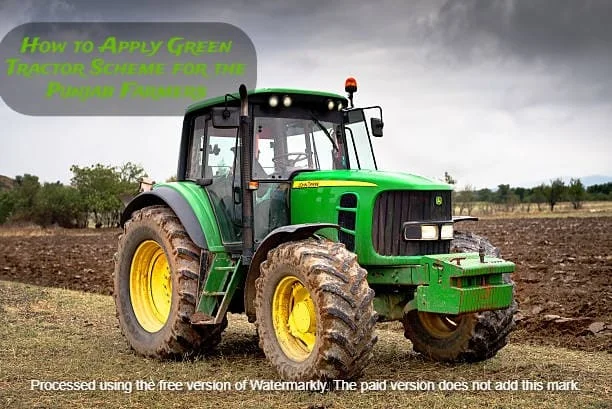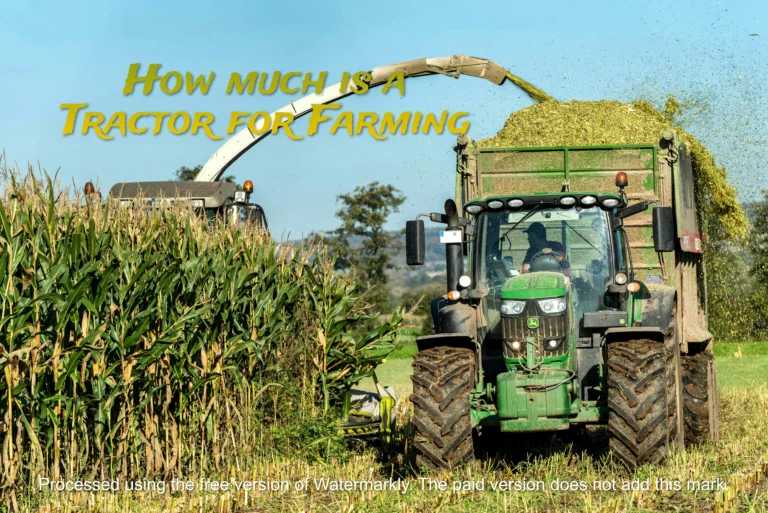How to Drive a John Deere Tractor
Start engine, engage clutch, shift gears, release parking brake. Gradually release clutch while applying throttle to move. Steer using wheel, adjust speed with throttle. Always follow safety guidelines and wear protective gear when operating a tractor.
Introduction
Driving a tractor, especially a John Deere tractor, can be an exhilarating and rewarding experience. Whether you’re a farmer, rancher, or simply an enthusiast, maneuvering these powerful machines requires skill, knowledge, and a deep respect for their capabilities. In this comprehensive guide, we’ll delve into the intricacies of operating a John Deere tractor, covering everything from pre-operation checks to advanced techniques for various agricultural tasks.
How to understanding Drive a John Deere Tractor
Before we embark on the journey of driving a John Deere tractor, it’s essential to familiarize yourself with the different models and their unique features. John Deere offers a wide range of tractors, each designed to cater to specific agricultural needs and applications.
Tractor Models and Their Applications
Model Primary Use John Deere 5 Series General-purpose, utility tractors for small to mid-sized Deere 6 Series Versatile, mid-range tractors for row-crop operations John Deere 7 Series High-horsepower tractors for large-scale farming and heavy-duty tasks John Deere 8 Series Premium, high-performance tractors for expansive operations John Deere 9 Series Cutting-edge, track-based tractors for maximum traction and efficiency
Understanding the capabilities and limitations of your specific John Deere tractor model will help you operate it safely and effectively.
Key Components and Controls
Before starting your tractor, familiarize yourself with its key components and controls:
H3 Operator’s Station
- Seat and steering wheel
- Instrument cluster (tachometer, fuel gauge, etc.)
- Control levers (throttle, transmission, hydraulics)
- Pedals (clutch, brakes, and accelerator)
Power and Drivetrain
- Engine (diesel or alternative fuel)
- Transmission (manual, power-shift, or continuously variable)
- Rear axle and differential
- Power take-off (PTO) shaft
Hydraulics and Attachments
- Three-point hitch
- Hydraulic control valves
- Implement/attachment mounting points
Familiarity with these components will make your tractor operation smoother and more efficient.

Pre-Operation Checks
Before firing up your John Deere tractor, it’s crucial to perform a thorough pre-operation inspection. This step ensures the safety of both the operator and the machine, while also helping to prevent costly breakdowns and potential accidents.
Visual Inspection
- Check for any visible signs of damage, leaks, or wear on the tractor and its components.
- Ensure that all guards and safety shields are in place and secure.
- Inspect the tires for proper inflation, wear, and damage.
Fluid Levels
- Check and top up the engine oil, coolant, hydraulic fluid, and fuel levels as required.
- Inspect for any leaks or signs of contamination in the fluids.

Safety and Functionality Checks
- Test the brake pedals, steering, and all control levers for proper operation.
- Ensure that all lights, indicators, and warning systems are functioning correctly.
- Inspect the PTO shaft and its guards for any damage or missing parts.
Hitching and Mounting Implements
- If you plan to use any attachments or implements, ensure they are properly hitched and secured to the tractor.
- Double-check the compatibility of the attachments with your tractor model and follow all safety guidelines.
By conducting these pre-operation checks, you can significantly reduce the risk of accidents and ensure optimal performance from your John Deere tractor.

Starting and Driving Procedures
With your pre-operation checks complete, it’s time to start your John Deere tractor and get it moving. Follow these steps for a smooth and safe start-up:
- Enter the Operator’s Station: Ensure that the transmission is in neutral, the parking brake is engaged, and all controls are in their neutral or off positions.
- Start the Engine: Insert the key, turn it to the “ON” position, and wait for any warning lights or indicators to clear. Then, engage the starter and allow the engine to idle for a few minutes to warm up.
- Disengage the Parking Brake: Once the engine is running smoothly, release the parking brake.
- Select the Appropriate Gear: Based on your intended task and the terrain, select the appropriate gear range and gear using the transmission control lever or shuttle shift.
- Engage the Clutch and Release the Brake: Slowly depress the clutch pedal and release the brake pedal to allow the tractor to move forward or backward, depending on the gear selected.
- Control Speed and Direction: Use the throttle lever to control the engine speed and the transmission control lever or shuttle shift to change gears and direction as needed.
- Steer and Monitor Instruments: Keep a firm grip on the steering wheel and regularly monitor the instrument cluster for any warning lights or fluctuations in engine performance.
- Stop the Tractor: When stopping, gently depress the clutch pedal and apply the brakes. Once the tractor has come to a complete stop, engage the parking brake and return the transmission to neutral.
Remember, always operate your John Deere tractor at a safe speed, taking into account the terrain, visibility, and any attachments or implements being used.
Advanced Tractor Operations
As you gain experience driving your John Deere tractor, you may need to tackle more complex tasks and terrains. Here are some advanced techniques and considerations:
Hitching and Operating Implements
John Deere tractors are designed to work with a wide range of implements and attachments, such as plows, harrows, planters, and balers. When using these implements, follow these guidelines:
- Carefully read and follow the operator’s manual for each implement.
- Ensure that the implement is properly hitched and secured to the tractor’s three-point hitch or drawbar.
- Adjust the implement’s depth, angle, or other settings as required for the task at hand.
- Engage the PTO shaft (if needed) at the recommended speed and follow all safety precautions.
- Monitor the implement’s performance and make adjustments as necessary.
Operating on Slopes and Uneven Terrain
Driving a tractor on slopes and uneven terrain requires extra caution and skill. Here are some tips:
- Reduce your speed and use a lower gear when ascending or descending slopes.
- Avoid sharp turns or sudden maneuvers that could cause the tractor to tip over.
- When operating on hillsides, keep the heavy end of the tractor pointed uphill.
- Use the differential lock (if available) to improve traction on slippery or uneven surfaces.
- Be aware of potential obstacles, drop-offs, or unstable ground conditions.
Transporting and Loading
If you need to transport your John Deere tractor or load it onto a trailer, follow these steps:
- Ensure that the tractor is securely hitched to the towing vehicle or properly positioned on the trailer.
- Use appropriate tie-down points and straps to secure the tractor.
- Engage the parking brake and ensure the transmission is in neutral.
- Follow all local regulations and traffic laws when transporting the tractor on public roads.
Maintenance and Storage
Proper maintenance and storage are essential for ensuring the longevity and performance of your John Deere tractor. Follow these guidelines:
- Refer to the operator’s manual for recommended maintenance schedules and procedures.
- Regularly check and change fluids, filters, and other consumable parts as required.
- Clean the tractor after each use to prevent dirt and debris buildup.
- Store the tractor in a dry, covered area when not in use, and engage the parking brake.
- Perform any necessary repairs or replacements promptly to avoid further damage or breakdowns.
By mastering these advanced techniques and following best practices, you’ll be able to tackle a wide range of agricultural tasks with confidence and efficiency.
Conclusion
Driving a John Deere tractor is a rewarding and empowering experience, but it also comes with great responsibility. By understanding your tractor’s capabilities, following proper pre-operation checks, and practicing safe operating procedures, you can make the most of your machine while minimizing the risk of accidents or breakdowns.
Remember, safety should always be your top priority when operating any heavy machinery. Follow all manufacturer guidelines, wear appropriate protective gear, and remain vigilant at all times. With experience and proper training, you’ll soon become a skilled operator, capable of handling even the most challenging agricultural tasks with ease.
FAQs
1: Do I need a special license to drive a John Deere tractor?
In most cases, you do not need a special license to operate a tractor solely for agricultural purposes on private property or farms. However, if you plan to drive the tractor on public roads, you may need to obtain a specific license or permit, depending on your state or local regulations. It’s essential to check with your local authorities regarding the licensing requirements for operating farm machinery on public roads.
2: What safety gear should I wear when driving a John Deere tractor?
For your safety, it’s recommended to wear appropriate protective gear when operating a John Deere tractor. This includes:
- A hard hat or protective helmet
- Safety glasses or goggles
- Sturdy, slip-resistant work boots
- Gloves (when appropriate)
- Hearing protection (ear plugs or muffs)
- Reflective or high-visibility clothing (especially when operating near public roads)
Additionally, avoid loose clothing or jewelry that could get caught in the tractor’s moving parts.
3: How do I properly hitch and unhitch implements to a John Deere tractor?
Hitching and unhitching implements to a John Deere tractor requires caution and attention to detail. Follow these general steps:
- Park the tractor on a level surface, engage the parking brake, and lower the implement to the ground.
- Carefully back the tractor up to the implement, aligning the hitch points.
- Engage the hydraulic controls to raise or lower the three-point hitch as needed.
- Securely attach the implement to the tractor’s hitch points, using the provided pins, clips, or locking mechanisms.
- Connect any necessary hydraulic lines, electrical connections, or PTO shafts.
- To unhitch, reverse the process, ensuring the implement is stable and supported before disconnecting it from the tractor.
Always refer to the operator’s manual for specific instructions and safety precautions for your tractor and implement models.
4: How do I properly maintain and store my John Deere tractor?
Regular maintenance and proper storage are crucial for keeping your John Deere tractor in optimal condition. Here are some key tips:
- Follow the recommended maintenance schedule in the operator’s manual, including regular oil changes, filter replacements, and fluid level checks.
- Clean the tractor after each use, removing dirt, debris, and any built-up plant matter or residue.
- Inspect the tractor regularly for any signs of wear, damage, or leaks, and address any issues promptly.
- Store the tractor in a dry, covered area, such as a shed or barn, to protect it from the elements.
- Engage the parking brake and chock the wheels when storing the tractor.
- Consider using a tractor cover or tarpaulin to further protect it from dust, moisture, and sunlight.
Proper maintenance and storage will extend the lifespan of your John Deere tractor and ensure it’s ready for use when needed.
5:What should I do if my John Deere tractor gets stuck or encounters trouble?
If your John Deere tractor gets stuck or encounters trouble while operating, follow these steps:
- Remain calm and assess the situation. Do not attempt to force the tractor out of a stuck situation, as this could cause further damage or safety issues.
- If the tractor is in a precarious position, such as on a slope or near a drop-off, stop all movement and engage the parking brake immediately.
- If the issue is related to a mechanical failure or breakdown, turn off the tractor and consult the operator’s manual or contact a qualified service technician for assistance.
- If the tractor is stuck in mud, sand, or soft ground, you may need to use tow straps or chains to pull it out with another tractor or vehicle. Exercise caution and follow proper safety protocols during recovery operations.
- If you cannot resolve the issue yourself, do not hesitate to call for professional assistance or a tow service.
Remember, safety should always be the top priority when dealing with a stuck or troubled tractor.






